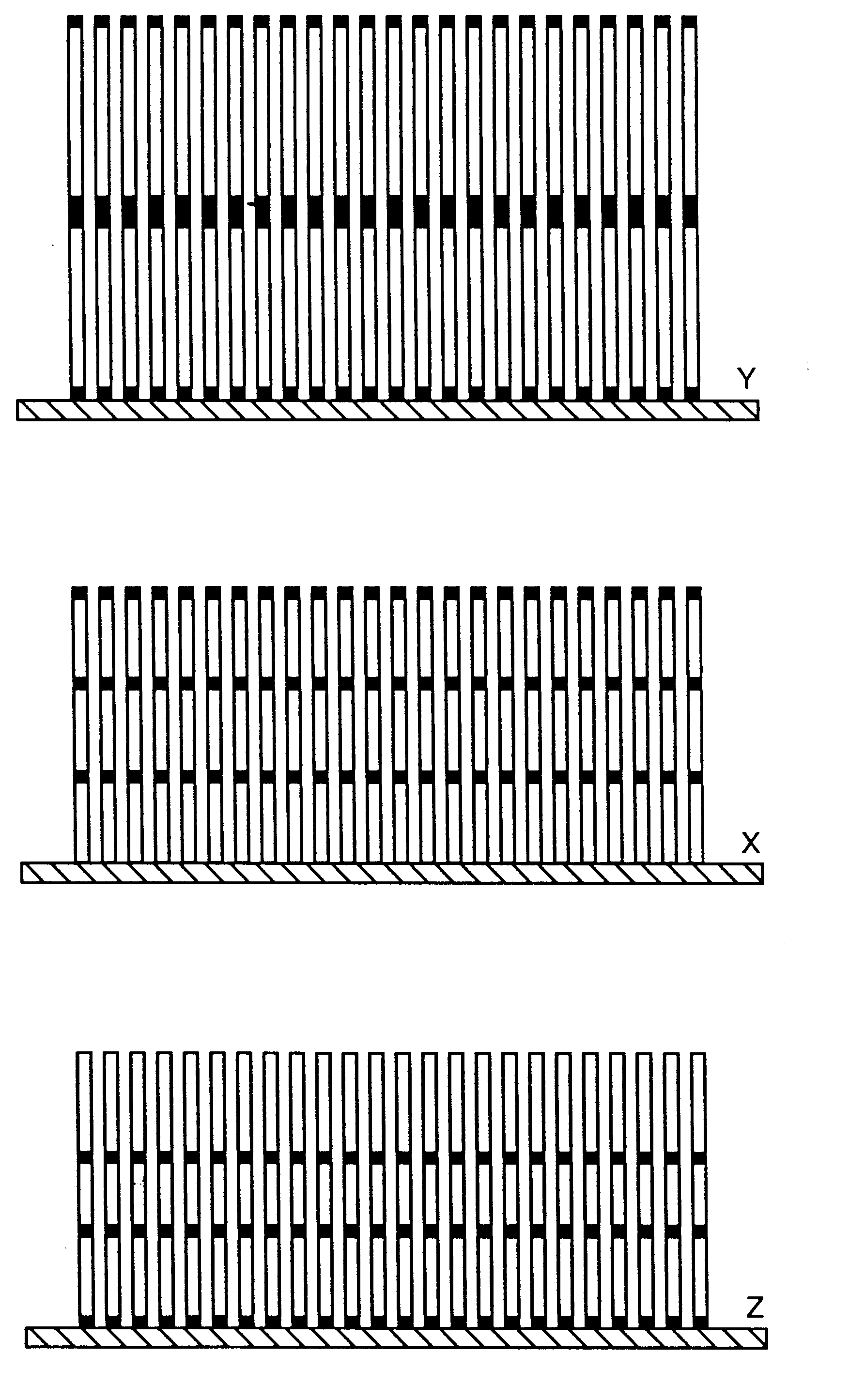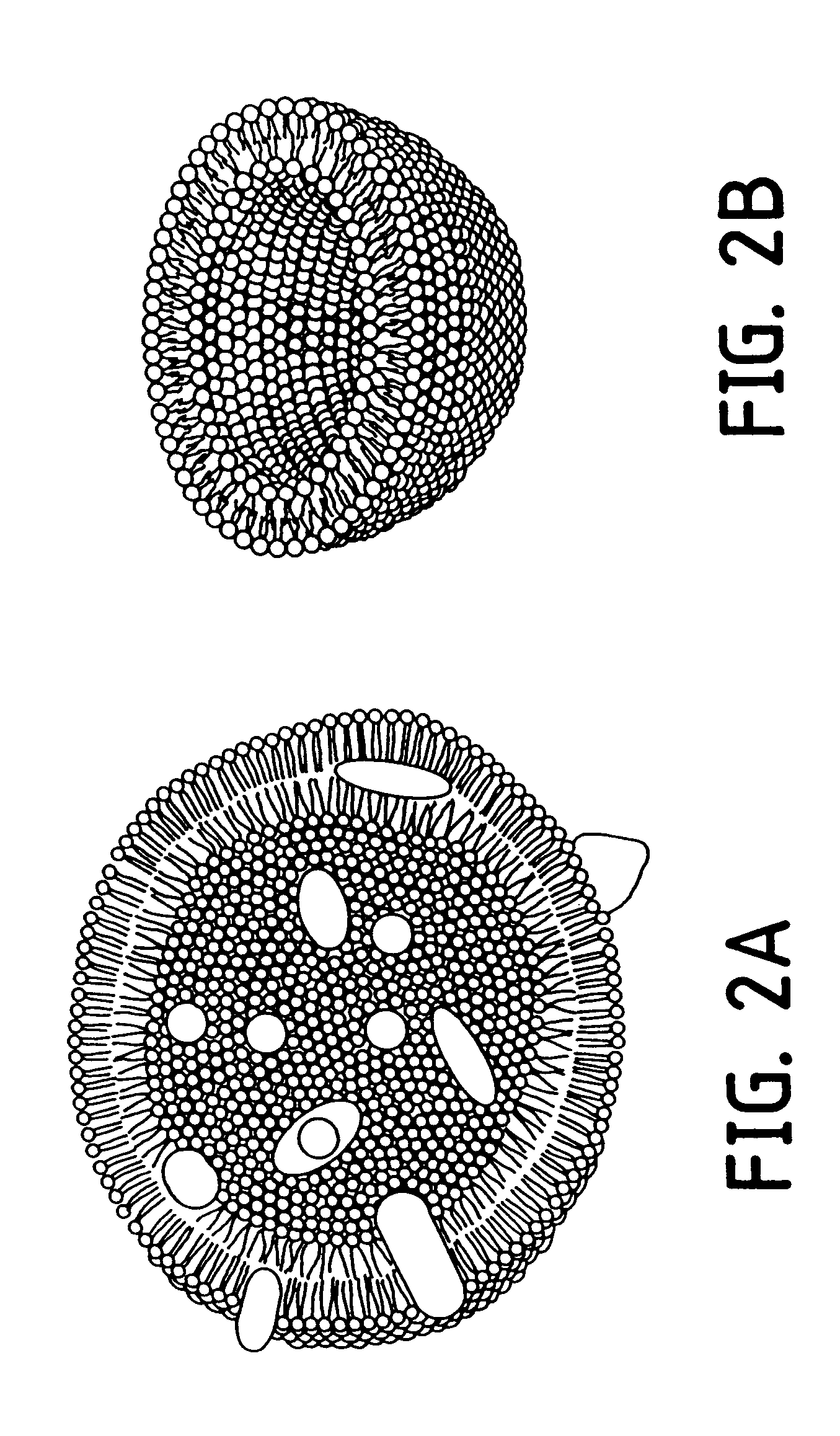Nucleic acid-coupled colorimetric analyte detectors
a colorimetric analyte and nucleic acid technology, applied in the field of nucleic acid-coupled colorimetric analyte detectors, can solve the problems of complex equipment, labor intensive and time-consuming multi-step procedures, and both methods are rather sensitive to interferen
- Summary
- Abstract
- Description
- Claims
- Application Information
AI Technical Summary
Problems solved by technology
Method used
Image
Examples
example 1
Biopolymeric Material Preparation
I. Production of Liposomes
The self-assembling monomers to be incorporated into the liposomes were dissolved in solvent (e.g., chloroform for diacetylenes and methanol for ganglioside G.sub.M1). Many other volatile solvents find use in the present invention, including, but not limited to, benzene, hexane, and ethylacetate. The solvent solutions were mixed in appropriate volumes in a brown vial (i.e., to prevent light interference during the upcoming drying steps) to achieve the desired lipid mixture (e.g., 5% by mole of G.sub.M1, 95% diacetylenes) and a total lipid content of approximately 2 .mu.mol. The solvent was then evaporated by rotary evaporation or with a stream of nitrogen gas. The dried lipids were resuspended in sufficient de-ionized water to produce a 1-15 mM solution of lipid. The solution was then sonicated for 15-60 minutes with a probe sonicator (Fisher sonic dismembrator model 300, 50% output, microtip) as described by New (New, supra...
example 2
Examination of Biopolymeric Materials
1. Optical Microscopy and X-ray Spectroscopy
Diacetylene films were prepared in a Langmuir Blodgett trough as described above using a combination of PDA monomers and sialic acid-derived PDA monomers. The floating polymerized assembly was lifted by the horizontal touch method onto a glass slide previously coated with a self-assembled monolayer of octadecyltrichlorosilane (OTS) as described (Maoz and Sagiv, J. Colloid Interface Sci. 100: 465 [1984]).
The slide was then examined by optical microscopy with the use of crossed polarizers as described (Day and Lando, Macromolecules 13: 1478 [1980]). The film exhibited a high degree of order over a macroscopic range (i.e., 50 to 150 .mu.M) as shown in the optical micrograph of FIG. 20. Large domains up to 150 .mu.M were visible (1 cm=10 .mu.M).
The films were further characterized by angle-resolved x-ray photoelectron spectroscopy (XPS) and ellipsometry. The XPS results indicated that the amide nitrogen ato...
example 3
Optimization of Biopolymeric Materials
The present invention provides a variety of different biopolymeric material forms (e.g., liposomes, films, tubules, etc.), with and without dopant materials, with a variety of ligands, and immobilized in a variety of forms. For each of these embodiments, it is possible to optimize the biopolymeric material to maximize sensitivity, robustness, colorimetric response, and other desired factors. Described below are a few illustrative examples of such optimization. These examples are intended to merely illustrate the flexibility of the present invention. It is not intended that the present invention be limited to these particular embodiments.
I. Mixed Monomers
The biopolymeric material of the present invention can comprise a sample of pure monomers (e.g., pure diacetylene) or can comprise mixed monomers (e.g., PDA with Ganglioside G.sub.M1 or dopant). Optimization of the percent composition of mixed monomers can be undertaken to provide biopolymeric ma...
PUM
| Property | Measurement | Unit |
|---|---|---|
| molecular weight | aaaaa | aaaaa |
| molecular weight | aaaaa | aaaaa |
| temperatures | aaaaa | aaaaa |
Abstract
Description
Claims
Application Information
 Login to View More
Login to View More - R&D
- Intellectual Property
- Life Sciences
- Materials
- Tech Scout
- Unparalleled Data Quality
- Higher Quality Content
- 60% Fewer Hallucinations
Browse by: Latest US Patents, China's latest patents, Technical Efficacy Thesaurus, Application Domain, Technology Topic, Popular Technical Reports.
© 2025 PatSnap. All rights reserved.Legal|Privacy policy|Modern Slavery Act Transparency Statement|Sitemap|About US| Contact US: help@patsnap.com



